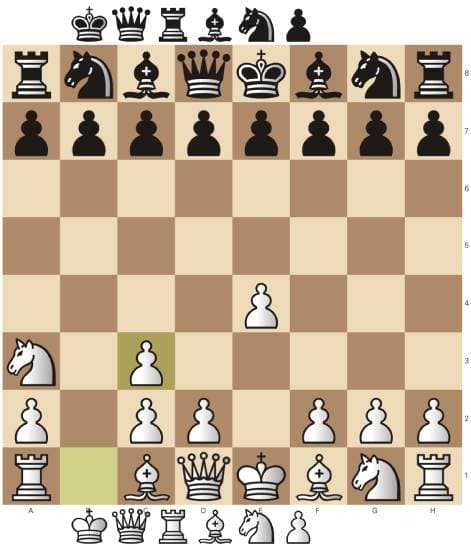

Your question was not specific to Lichess, but LucasR likely does something quite similar internally.
#Chess move calculator for winning code#
I've been working on interpreting the Lichess source code lately, and you can actually see for yourself here and here the source code that "judges" a move.

The reason for this is because judgements are made based on win probability, as answer alludes to. For example, if your move as white takes the CP score from 0 to -200, the move may be called a blunder, but if it takes you from -600 to -800, the move may be called an inaccuracy. However, you may come to notice that the "judgement" on the move ( inaccuracy, mistake, or blunder are the standard ones, with other chess programs defining others, like decent) is not always the same even if the difference in CP values-the CP loss or CPL-is the same. +3 being an advantage the equivalent of 3 pawns for white. I wonder why a score of +4.82 is a blunder while a score of +0.62 is "decent"Īs others have mentioned, CP scores being positive or negative reflect the computer eval being in favor of white or black respectively, with ex. Stockfish's recent documentation (see Normalize evaluation) explains that with the rise of the NNUE framework Stockfish now uses "'100 centipawns' for a position if the engine has a 50% probability to win" under specific conditions for the engine.Ħ.

As pointed out in the comments by Allure, 100 centipawns is no longer truly indicating a 1 pawn advantage. Thus, a higher evaluation implies a higher probability of White winning and a lower evaluation (negative) implies a higher probability of Black winning.ġ00 centipawns ≠ 1 pawn. The figure below illustrates the model: W = (1 + 10^(P/K))^(-1) where W is the probability of a win, P is the pawn advantage evaluation, and K is an unknown constant (set to 4). In addition to inverting the functions above, there are additional models for converting a centipawn evaluation to the probability of a win. The exact nature of the mathematical relationship may vary slightly. Instead of the centipawn-based evaluation that Stockfish uses, some neural network-based engines such as AlphaZero or LeelaZero estimate the probability of a win from the position. There is also a natural link to the probability of the game's outcome. Add that number to half of the tie results:ĭivide the number you got by the total number of games:ĥ9.38% is the winning percentage of the football team you cheer for.As mentioned in this answer, the evaluation +0.5 (+50 centipawns) means a half-pawn advantage for White while a –2 evaluation (-200 centipawns) implies a 2 pawn advantage for Black. Now, you know that the team has won 7 games during the last season. Wins = games - ties - losses = 16 - 5 - 4 = 7 If the total number of games is 16, then you can use the formula below: What is their winning percentage?ĭetermine the number of wins. They lost 4 of them and got a tie result in 5. To get a better understanding of this formula, let's consider the following example: a football team playing in the National Football League has played 16 games in total. Winning percentage = (wins + 0.5 × ties) / gamesįor this equation, the number of games is the sum of win, loss, and tie results on the team's record. In such a case, you can use our percentage calculator or evaluate the percentage by hand in the following way: It is usually assumed that a tie is worth the same as 1/2 of a win. If, on the other hand, you want to include ties into the whole calculation, the formula gets a bit more complicated.


 0 kommentar(er)
0 kommentar(er)
